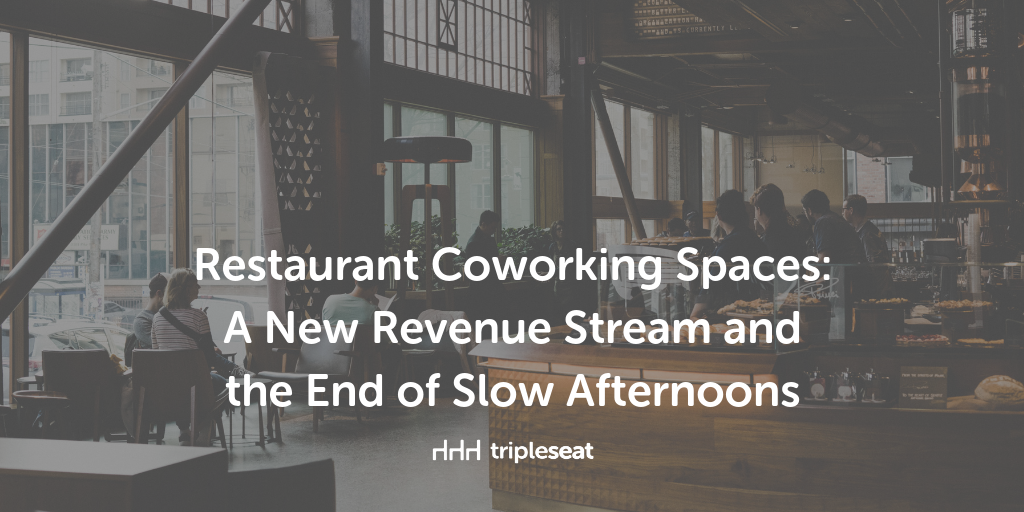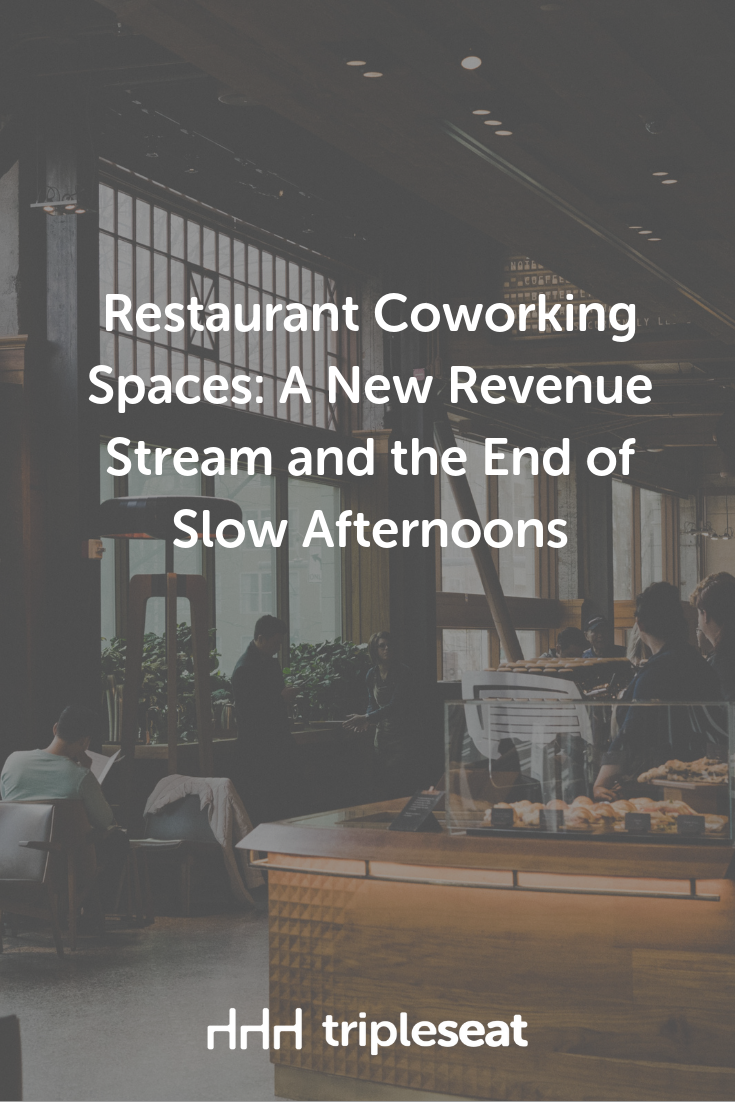Restaurant Coworking Spaces: A New Revenue Stream and the End of Slow Afternoons

For office workers, there was a time when work meant sitting in a cubicle on a strict nine to five schedule. Today’s workforce puts in hours on a subway car, a flight across the country, a coffee shop, or even a restaurant’s dining room.
The modern concept of coworking has ushered in a new era where bright and airy spaces, a sense of community, and a more social, positive work environment have all become attainable – and it can be found in your restaurant.
A coworking space is a new-age office where individuals and small companies sit side-by-side and share space. To use a coworking space, customers pay for access to a seat, a desk, or a private office (prices increase accordingly) and receive additional workplace perks like free Wi-Fi, coffee, snacks, and free community events like happy hours or lectures. Coworking spaces aren’t only beneficial for employees; they also allow for companies as a whole to improve by providing more flexible spending on a lease and the opportunity for entire teams to work side-by-side.
Coworking spaces started popping up in 2005, when startup companies were looking for better workspaces for their small teams. Since then, they have popped up in big cities across the world, offering both big and small companies the opportunity to work in spaces that are both aesthetically and conceptually appealing. Small Business Labs reports the number of coworking spaces will more than double by 2022. Though the majority of the 30,000 spaces will house startups and the self-employed, large-scale corporations and firms have leaned on coworking spaces to provide a satellite location or as a corporate benefit for remote employees.
Though these new communal office spaces are winning over the corporate crowd, coffee shops and restaurants also offer professionals a similar pleasant working environment where they can enjoy made-to-order food and drink while networking with colleagues or getting some work done. Cafes have long accommodated laptop-carrying freelancers, students, and remote workers, but restaurant coworking spaces are picking up steam. Using services like Spacious or Kettlespace, or on their own, restaurants are now opening up tables for workers, especially during slow periods throughout the day.
Crave Fishbar on New York City’s Upper East Side is best known for its fresh seafood, yet if you were to go there on a weekday afternoon you’d find rows of people with headphones in, feverishly tapping on their laptops. Crave is one of many restaurants to collaborate with Spacious, a startup that works with restaurants to turn them into restaurant coworking spaces.
Spacious customers (the coworkers) pay a monthly fee to gain access to their network of participating restaurants, and in return, the restaurant profits off the usually quiet lunchtime hours. According to Vox, Crave gets a cut of Spacious’ customers’ monthly dues — a welcome source of income for the UES location. “The Upper West Side is kind of like the suburbs of New York City,” Crave’s owner Brian Owens explained. “It’s just not worth it for us to open up for lunch. Brunch and dinner, absolutely, but it’s just not worth it during the week. It’s a waste of space, and we’re paying a big rent.”
Owens says around 60-70 Spacious members use their space on any given workday, and they receive a cut of their monthly membership fees of $129 — a hefty amount for a restaurant who wants to up the ante during the week. As a result, restaurants are approaching the Spacious team in droves to learn how to participate, rather than the Spacious team pitching them.
For restaurants like Crave, the decision to become a coworking space isn’t merely motivated by the trend, but a need to pursue new revenue channels in order to grow their business.
Kettlespace is another company in the coworking game, and its CEO Nick Iovacchini understands how important it is to recycle services where possible. “When it comes to the KettleSpace platform, we are simply taking advantage of under-utilized assets and offering a simple new revenue stream into the model,” he explained. It’s not just about filling seats during the weekday; Iovacchini added that restaurants are excited to become coworking spaces because they’re exposed to new customers, are able to offer an exciting lunch menu, and are given the chance to cross-promote for other opportunities. If someone had a great lunch while working at a restaurant they’d never been to, they’re likely to think of it when trying to decide where to meet a friend for dinner.
The process to become a part of KettleSpace’s network of coworking spaces is very straightforward. “We start with an in-depth conversation to understand the nuances of your existing business, and from there we design an integration plan that’s genuinely accretive,” he says. “We understand the day-to-day challenges that operators face and we’re sensitive to those pain points.” They aim to make sure that the restaurants can steadily roll out this new side of their business and grow it slowly, without causing extra stress for restaurant owners, managers, or anyone else on staff.
Spacious’ site shows a similar process—a 5-minute questionnaire about your restaurant and why making it a coworking space makes sense.
Staying open for lunch every day of the week, or “all the way through” until dinner service, is an ongoing debate in most restaurants. Low foot traffic and low ticket volume paired with rising rent and labor costs make the decision to stay closed a smart option from an ROI perspective. However, marketing your restaurant as a coworking space, or participating in a program with a company like Spacious or KettleSpace, could spell the end of slow lunch shifts in your restaurant and drive up your profits.
Restaurants aren’t the only industry tapping into the revenue potential the coworking space movement offers: According to CNBC, shopping malls will also enter the game as potential coworking options after finding how many department stores are left vacant after closing. New coworking spaces often include food options, meaning that local cafes and restaurants looking to expand could find an opportunity there as well.
This post originally appeared on The Toast Restaurant Management Blog. It has been republished with permission from the source. If you would like to learn more about Toast and talk to a member of their team, please click here.

